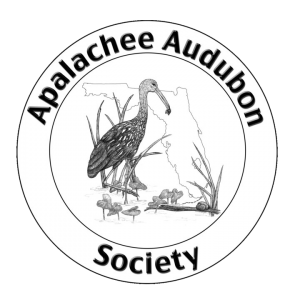By Peter Kleinhenz
On October 20, several Audubon members (David Arnold, Betsy Sullivan, Elizabeth Platt, Judy Goldman, and myself) began our first birding lesson at Pineview Elementary School. Armed with boxes of binoculars, including several donated by generous members among our ranks, the teachers set off to chip away at a seemingly-impossible task: connect youth who generally have little exposure to wild places to the wonders of the nature immediately around them.
The group assembled binoculars, got materials together, and rapidly understood that this school was going to be different than the schools many of us are used to. Still, we were wearing smiles as we first met the students.
We taught to the third and fourth grade after school programs. Elizabeth and I gave an overview of the Apalachee Audubon Society and an introduction of why we cared about getting the students into birding. Peter made a new friend when he asked a particularly-squirrelly young man to stand next to him until everyone went outside, but most students were attentive.
We went outside and split into groups. The generosity of our members and the Florida Fish and Wildlife Conservation Commission allowed most students to have their own pair of binoculars. Each group was given instructions on how to sight objects, focus, and remain stable while looking through the binoculars. The students are used to outside being play time, so getting them to listen and follow directions was . . . a challenge. However, most students were able to successfully find objects through binoculars by the end of the lesson. I, for one, challenged students to read from a sign on the other side of the school yard. Put a competition in front of young kids (particularly boys) and you'd be surprised how quickly they get into it!
A few groups were able to play a migration game, where students threw beanbags labeled as various birds at rings that represented refuges along the three North American flyways. Students learned the value of these refuges since, if they missed the rings, they perished.
Overall, our goal was to keep the kids active and having fun, while possibly learning a thing or two. The teaching wasn't easy, but they're kids. And they're kids that don't have many of the opportunities you and I have been blessed with. As we move forward throughout the school year, we have a sizable challenge ahead of us. But, I'd argue, it's as worthwhile a cause as any when it comes to creating the next generation that cares about Florida's precious natural heritage. It's at least what keeps me going.
We'd love to see you out there. It's not easy, but I guarantee that you'll feel like you helped at least one child move closer to an understanding about nature. Please get in touch with me at pnkleinhenz@gmail.com if you're interested.




















